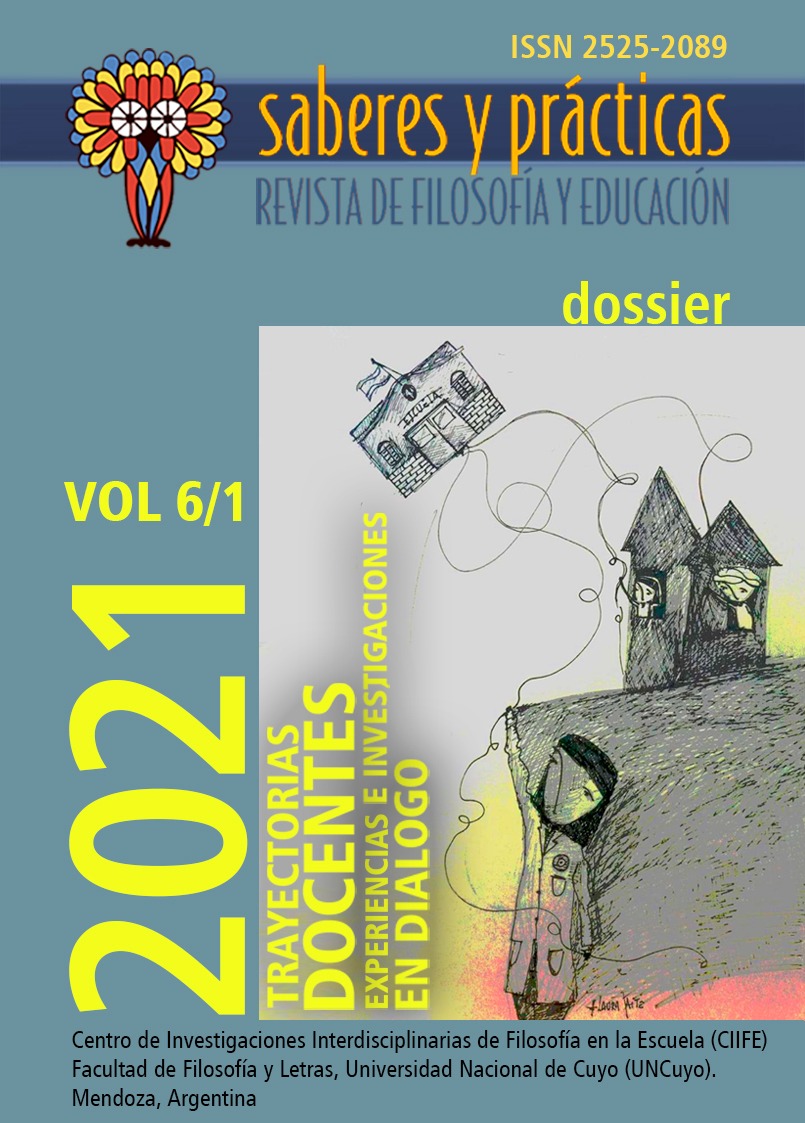Violence, dialogue and learning philosophy: teaching intervention on Higher Secondary Education
DOI:
https://doi.org/10.48162/rev.36.017Keywords:
Philosophy teaching, High School Education, Violence, Dialogue, Pedagogic innovationAbstract
The purpose of this work is to present the results of a teaching intervention designed for the teaching of philosophy in Higher Secondary Education. The main claim is that teachers can attend the social problem of violence and conflict if they educate the new generations on philosophical dialogue. On that premise, the authors prepared and tested a didactic design based on two elements: the collaborative work and a concept of dialogue. The authors propose to understand the dialogue as an argumentative exchange between the attendants that is oriented to a goal that also leads to the collective construction of meaning. Here, the authors expose the general problem of violence in our contemporary societies. Then, they show the theoretical principles that they adopted to build the didactic design. Finally, they expose the results of the experience that also implemented digital resources in the context of the sanitary crisis of COVID-19. Despite the restrictions imposed by the screens, the students managed to appropriate the philosophical contents and simultaneously they tested their skills to dialogue, argue and build together.
Downloads
References
Alba, A. (2014). Conflicto, autoridad y argumentación. Elementos para pensar los caminos para la paz en el aula. Sinéctica, 42/43, 59-74.
Baquero, R. (1997). Vigotsky y el aprendizaje escolar. Aique.
Bosco, M. (coord.) (2019). Aprendizaje en red. UNAM
Brenifier, O. (s/f). El diálogo en clase. http://www.pratiques-philosophiques.fr/wp-content/uploads/2015/07/El-dialogo-en-clase-ORIGINAL.pdf
Comisión Económica para América Latina y el Caribe/Fondo de las Naciones Unidad para la Infancia. (2020). Violencia contra niñas, niños y adolescentes en tiempo de COVID-19. https://www.unicef.org/lac/media/19611/file/violencia-contra-nna-en-tiempos-de-covid19.pdf
Comisión de Derechos Humanos del Distrito Federal (CDHDF) (2011). Manual para construir la paz en el aula. CDHDF.
Copeland, M. (2005). Socratic Circles. Stenhouse Publishers.
García, D. (2017) Diálogo y escucha, una reflexión para construir la paz. Universidades, num. 71, enero-marzo, 07-21. http://hdl.handle.net/10391/5365
Lemke, J. (1997). Aprender a hablar ciencia. Leguaje, aprendizaje y valores. Paidós.
Maldonado, M. (2007). El trabajo colaborativo en el aula universitaria. Laurus 13, no. 23, 263-278. https://www.redalyc.org/articulo.oa?id=76102314
Organización Mundial de la Salud (2002). Informe mundial sobre violencia y salud. OMS. https://www.who.int/violence_injury_prevention/violence/world_report/en/abstract_es.pdf
Rey, R. y Ortega, R. (2007). Violencia escolar: Claves para comprenderla y afrontarla. Escuela abierta, 10, 77-89
Romero, J. A. (2019). La violencia escolar: algunas tareas pendientes, en Revista ISCEEM, Año 14, Tercera época, enero-junio. https://issuu.com/isceem/docs/revista_isceem_no_27
SEMS/SEP (2014). Tercera encuesta nacional sobre Exclusión, Intolerancia y Violencia en Escuelas de Educación Media Superior. https://www.inee.edu.mx/wp-content/uploads/2019/03/Tercera-Encuesta-Nacional.pdf
UNICEF. (2020). Protección contra la violencia. UNICEF. https://www.unicef.org/mexico/protecci%C3%B3n-contra-la-violencia
Walton, D. (1998). The New Dialectic. Conversational context of argument. University of Toronto Press Incorporated.
Published
How to Cite
Issue
Section
License
License
This work is licensed under a Creative Commons Attribution-NonCommercial-ShareAlike 2.5 Argentina License.





















